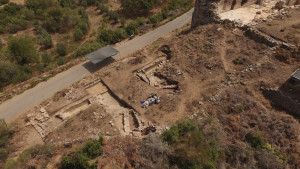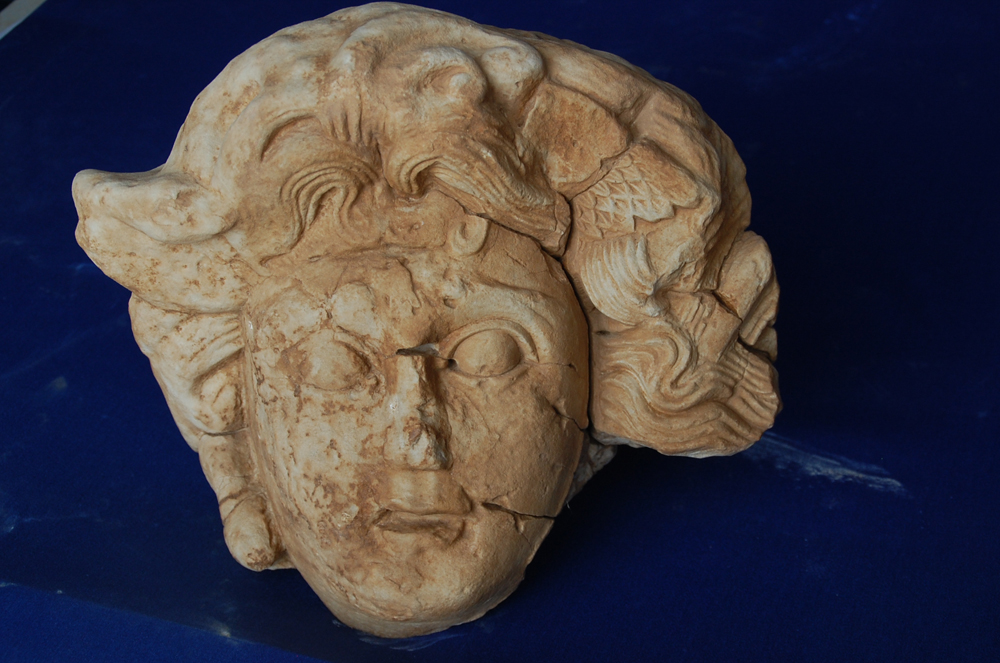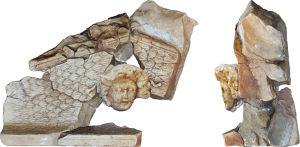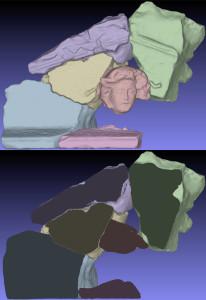A University of Nebraska–Lincoln team of archaeologists and a group of Turkish students were slowly excavating a series of ancient Roman ruins in southern Turkey when they made a thrilling discovery. The students had found a marble head of the mythical Greek monster Medusa that had miraculously survived an era when the ancient town’s later Christian residents regularly destroyed pagan artwork. The marble head was discovered at Antiochia ad Cragum, a Roman outpost and city from the first century during the rule of Emperor Nero.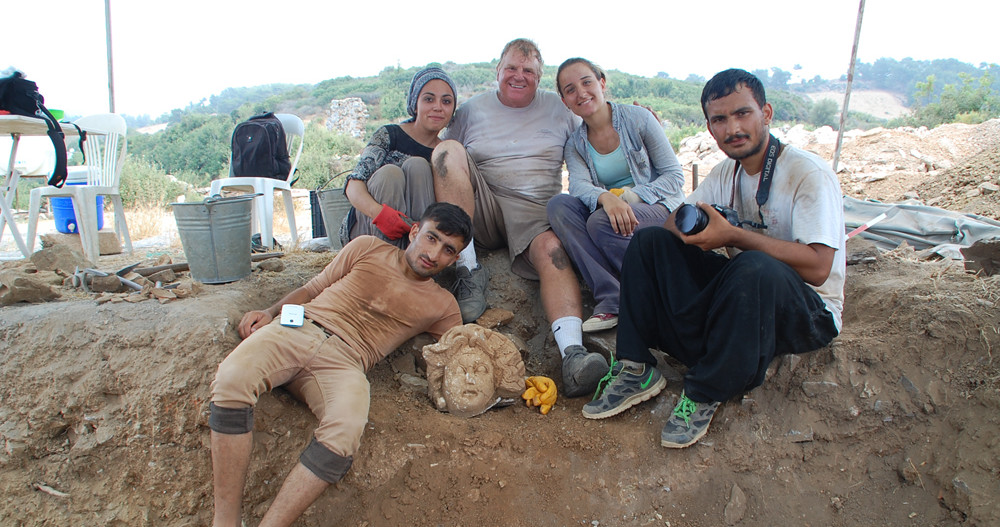
Antiochia was a community located outside of the town of Gazipaş in modern Turkey, near an area with craggy cliffs and fields dominated by wheat. The surprisingly lively outpost covered more than 7 acres, and while it was discovered back in the early 19th century, it has only recently been given any attention from scholars and archaeologists. Once University of Nebraska-Lincoln Art Historian and the director of the Antiochian excavations Michael Hoff began exploring the site, he and his team discovered that the settlement was most likely a surprisingly robust economic player during the Roman Empire.
There is evidence that it regularly traded and produced wine, agriculture and glass, before it became populated by Christians. And the small city included common Roman fixtures of the era, including several bathhouses, shops, column-lined streets, large mosaics and even a council house. Back in 2012 the researchers discovered a large 1,600-square-foot poolside mosaic with intricate geometric patterns. And a year later in 2013 they found the marble head of an Aphrodite sculpture.
“The fact that [Antiochia is] somewhat of an unknown city makes it fascinating for us as archaeologists. The result of all this economic activity is a pretty high degree of cultural output. The people living at Antiochia later were zealous Christians who were destroying art in much the same way that ISIS is destroying remnants of the ancient past. These things were meant to be destroyed and put into a lime kiln to be burned and turned into mortar,” explained Hoff to LiveScience.
Destroying and repurposing pagan and Roman artwork was a common practice for Christians of the era, so most of the early Roman artwork has been lost. In the fourth century when Christianity became the official religion of Rome it prompted the construction of several churches. Hoff and his team found evidence of several kilns from this time period that would have been used to repurpose much of the marble artwork into mortar. It was in these areas that the students discovered several piles and pockets of broken bits and parts from statues, sculptures and architectural features that had been smashed into pieces, including the marble head of Medusa.
Using advanced 3D photogrammetry techniques they discovered that Medusa’s head was not part of a freestanding statue, but rather more likely it would have been an architectural feature on a building. It was common for buildings of the era, usually temples, to be adorned apotropaically with Medusa’s image to ward off evil spirits. Her head was likely removed by later Christian residents who would have obviously found the head of a mythical Greek figure like Medusa idolatrous.
While at the dig site, the University of Nebraska-Lincoln researchers took hundreds of photographs of all of the bits of statues and sculptures found in the area. They were then fed into photogrammetry software that generated 3D models of dozens of individual fragments. Using these 3D models students were able to piece many of the parts back together, including what would have been the pediment that featured the visage of Medusa, with her head of serpent hair, wide eyes and open mouth.
Hoff and the University of Nebraska-Lincoln researchers plan to revisit the Antiochia dig site again next year. They intend to continue to excavate the city’s bouleuterion, or council house, which would have been the seat of the local legislature. They believe that it may have also found use as a music hall or a theater. Hoff also intends to further investigate several rows of shops that lined the Roman street in the hopes of discovering what was primarily being bought and sold in the town’s marketplace.
It is likely that without the usage of 3D photogrammetry technology the researchers would never have discovered that the Medusa head was part of a building and not a freestanding statue, much less have been able to piece all of the parts together. Because little is known about early Antiochia from ancient sources, most of what is being learned is from what few archaeological remains still exist. This is just one more way that 3D technology is radically altering the way that we study and learn about our history, either our ancient or our more recent history. Discuss this story in the Marble Medusa forum on 3DPB.com.
[Images: University of Nebraska-Lincoln]Subscribe to Our Email Newsletter
Stay up-to-date on all the latest news from the 3D printing industry and receive information and offers from third party vendors.
You May Also Like
Profiling a Construction 3D Printing Pioneer: US Army Corps of Engineers’ Megan Kreiger
The world of construction 3D printing is still so new that the true experts can probably be counted on two hands. Among them is Megan Kreiger, Portfolio Manager of Additive...
US Army Corps of Engineers Taps Lincoln Electric & Eaton for Largest 3D Printed US Civil Works Part
The Soo Locks sit on the US-Canadian border, enabling maritime travel between Lake Superior and Lake Huron, from which ships can reach the rest of the Great Lakes. Crafts carrying...
Construction 3D Printing CEO Reflects on Being Female in Construction
Natalie Wadley, CEO of ChangeMaker3D, could hear the words of her daughter sitting next to her resounding in her head. “Mum, MUM, you’ve won!” Wadley had just won the prestigious...
1Print to Commercialize 3D Printed Coastal Resilience Solutions
1Print, a company that specializes in deploying additive construction (AC) for infrastructure projects, has entered an agreement with the University of Miami (UM) to accelerate commercialization of the SEAHIVE shoreline...


